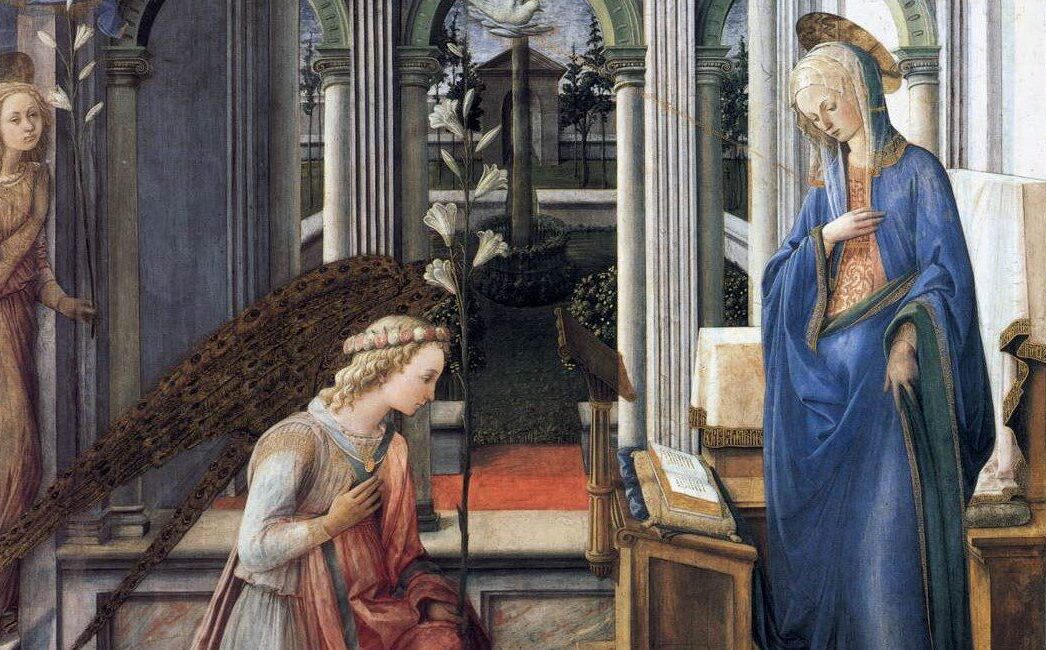Liturgical Sign Language: Hands Extended and Joined, Blessing, and Striking the Breast
In addition to the orans posture and praying with hands joined, the priest celebrant makes use of a variety of other hand gestures throughout the Mass. He frequently is directed to extend and join his hands, to bless, and on certain occasions to strike his breast.
Greeting
For the greeting during the Introductory Rites and Concluding Rites, the priest celebrant extends and joins his hands (see General Instruction of the Roman Missal (GIRM), 124 and 167; Order of Mass (OM), 2 and 141). Although the Latin as well as the English use the same verb, to extend, for the greeting and the orans, the position is not the same. For the greeting, the extension of the hands is limited because they are quickly joined as the faithful respond. This would also be true for “Pray, Brethren” (see GIRM, 146 and OM, 29) and “The peace of the Lord be with you always” (see GIRM, 154 and OM, 127). For the orans, the hands remain extended—outstretched and raised.
Interestingly, before the Gospel the deacon, as well as the priest celebrant in the absence of a deacon, carries out the greeting with hands joined (see GIRM, 135 and 175). This curious rubric is given without an explanation in the GIRM. The Order of Mass makes no mention of any gesture for this same greeting (see OM, 15). My own thought is that the deacon is carrying out a ministerial role as he proclaims the Gospel. His greeting of the liturgical assembly at this point is not that of the presiding priest, especially at the chair, as head of the body which the gesture of extending and joining hands beautifully illustrates. Rather, the deacon’s greeting as a minister of the Gospel prepares the listeners for this new moment of an encounter with the Risen Lord. This is perhaps why even the priest likewise in the absence of the deacon imitates the deacon’s joined hands for this greeting.
During the Eucharistic Prayer
There is another time when the priest greets the assembly but does not rejoin his hands. This is the greeting that begins the Eucharistic Prayer. The priest extends his hands for “The Lord be with you.” But does not rejoin them. Rather after the people’s response he continues, “Lift up your hearts,” and raising his hands at the same time. After the people’s response, he extends his hands, moves into the orans position and says, “Let us give thanks to the Lord our God.” He maintains the orans position as the people respond and for the Preface that follows (see GIRM, 148 and OM, 31).
Blessing
When a deacon is present, the priest celebrant blesses him before he proclaims the Gospel (see GIRM, 175 and OM, 14). In each of the Eucharistic Prayers, the priest blesses the bread and wine (see for example OM, 109). As part of the Concluding Rites, the priest blesses the people (see GIRM, 167 and OM, 141). As with the gestures already described, the manner of carrying out the blessing with dignity enhances its meaning. The Sign of the Cross in each instance should be deliberate, not exaggerated and directed to the deacon, to the offerings, or to the people. The General Instruction of the Roman Missal provides specific details for the blessing of the people. “Then the Priest, extending his hands, greets the people, saying: ‘The Lord be with you.’ They reply ‘And with your spirit.’ The Priest, joining his hands again and then immediately placing his left hand on his breast, raises his right hand and adds: ‘May Almighty God bless you’ and, as he makes the Sign of the Cross over the people, he continues: ‘the Father, and the Son, and the Holy Spirit.’ All reply ‘Amen.’” (GIRM, 167).
Striking the Breast
When the Penitential Act includes the “I confess,” the priest celebrant, as well as everyone else strike their breast with the words, “through my fault, through my fault, through my most grievous fault (see OM, 4).” In Eucharistic Prayer I, the Roman Canon, the celebrant and concelebrants strike their breast at the words, “To us, also, your servants, who though sinners (see GIRM, 224 and OM, 96).” The deliberate striking of the breast, perhaps more than the text, communicates the attitude of repentance declared with these texts.
Hand-crafted Art
The directions for hand positions of the priest celebrant in the course of the celebration of the Mass assist with the rite and the participation of the faithful, especially when they are carried out with care, contributing to the ars celebrandi of the whole celebration. In addition, they also serve and guide the praying of the priest celebrant as he presides over the faithful in the person of Christ and is charged by the Church to do so with dignity and humility (see GIRM, 93).
The first part in this series is available by clicking here. The second part is available here and the third here.



